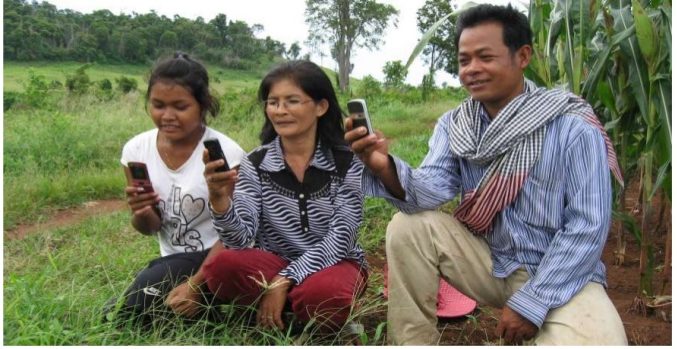- Contents
 Mobile data collection has many benefits for a myriad of research projects, whether for international development and relief or market insights. With technological advances, remote, mobile-based surveys have become increasingly important for anyone looking to collect data.
Mobile data collection has many benefits for a myriad of research projects, whether for international development and relief or market insights. With technological advances, remote, mobile-based surveys have become increasingly important for anyone looking to collect data.
Whether used exclusively or in addition to other methods, we look at factors to consider when collecting data using mobile modes.
The Objective
With any research study, the most essential and first step is identifying the primary purpose for the study. Laying out the objectives and the information needed at the end of the study helps narrow the focus and determine the shape and structure of the entire project.
Population and Sample (Target Audience)
The next primary consideration is the audience you are trying to reach in the study. If, for example, you are conducting a survey on education, the sample would be drawn from students, teachers and parents. On the other hand, a more general study could be targeted at a nationally representative sample that follows the demographic and geographic structure of the country being studied. Some projects might require an even more targeted group of people, such as the beneficiaries of a development initiative.
For a mobile data collection study, the sample is ideally comprised of phone numbers. It helps to have access to a database as robust as GeoPoll’s, with over 250 million users indexed by key demographics such as age, gender, and location. These mobile subscribers often serve as the sample for the research we conduct.
The Frequency
The frequency of engaging the target audience in mobile surveys varies. Sometimes, a one-time snapshot or needs assessment may be all that is required. Other times, ongoing monitoring over several months may better serve the overall objective.
GeoPoll conducts thousands of mobile surveys daily, and we have learned that frequency matters. Often, the more you engage in mobile surveying, the better respondents understand the process, expectations, and outcomes of the engagement. On the other hand, there is a need to be mindful of the respondent’s experience and conscious of potential user fatigue. With the right balance, conducting surveys on a daily, weekly, or monthly basis allows for more granular data which can be disaggregated to see specific points in time as changes occur.
The Drawbacks of Mobile Data Collection
Mobile surveys are not without their disadvantages. They require connectivity, and some areas may not have network connections. Link-based surveys, for example, require the internet, which is not universally available.
Mobile surveys are also supposed to be short, which may not work with certain types of projects, nor would they be ideal for research that requires observation, touch and feel.
Mobile surveying is not necessarily meant to replace face-to-face surveys. Mobile surveying and traditional surveying methodologies can often work together to overcome the limitations of each method. For example, CATI surveys can be deployed where internet connectivity or literacy is not admissible. CAPI surveys can be used when the enumerator needs to be on location.
Incentives
To increase the response rate and respondent ownership of remote surveys, incentives are typically incorporated. These can be anything from airtime to tangible gifts, and there needs to be a consideration to make it as seamless and affordable as possible while maintaining the integrity of the participation.
At GeoPoll, we have developed a system to incentivize our respondents using mobile airtime and mobile money, which is delivered shortly after survey completion. This system has been made possible by our direct integration with mobile network operators around the world.
Data Output
How data will be relayed and used is also an important consideration. A significant benefit of mobile-based surveys is that data can be relayed back for processing in real-time in the required data format – whether it’s raw datasets or online dashboards that visualize data.
Beyond the nuts and bolts of transmitting data, thinking about how it will fit into the broader decision-making process is essential before launching mobile data collection activities. For example, is there already an existing process for making decisions based on the data? Regardless of the intricacies of the project, timing the data collection to coincide with reporting timelines and/or decision-making processes will ensure the data is used in a meaningful way.
Conduct Mobile Research with GeoPoll
As the pioneer in mobile surveys in Africa, Asia, and Latin America, GeoPoll has, over the years, developed and perfected all the elements of successful mobile-based research projects. Our extensive database of mobile users, partnerships with mobile network operators, unique research platform, and a widely experienced team make us an ideal partner for development organizations, governments, and brands looking to collect data fast and accurately. See the mobile modes we offer here and contact us to learn more about our capabilities.
